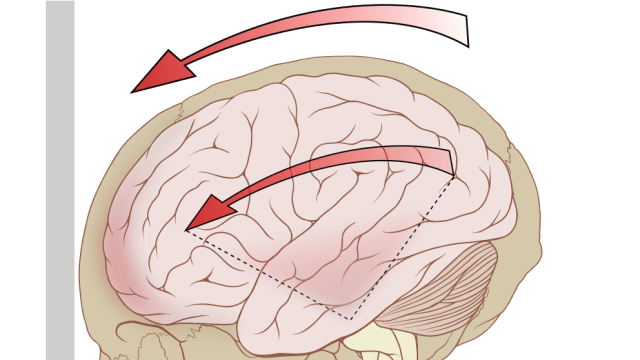Concussion research is usually the domain of medical science, but a group of physicists in France decided to tackle the subject in a very… tactile way. They banged a beaker full of water with a hammer, hoping to better understand the forces and motions involved in head trauma.
Past research has pointed toward micro-bubbles in the brain playing a role in traumatic brain injuries such as concussions. Concussions are the result of a shock on the brain — the head accelerating over a critical threshold for a certain period of time. They’re commonly caused by playing certain contact sports such as rugby and boxing.
But scientists are still working on teasing out exactly what goes on in the brain during the concussion, and some think small bubbles might have something to do with it.
Researchers from the École Polytechnique in France built a simple model of the brain using a beaker full of water. Basically, they hit it with a hammer and filmed it in slow motion, watching as bubbles formed on the opposite side of the beaker before it broke.
They also performed more controlled experiments on a length of water-filled tube, applying higher accelerations for longer periods of time. These accelerations created drops in pressure, and above a certain acceleration threshold, bubbles formed in the fluid, according to a presentation the researchers gave this week at the American Physical Society’s March meeting in Boston.
But accelerating sealed glass tubes doesn’t explain what bubbles on the brain have to do with concussions. So the researchers introduced a flexible membrane at the bottom, which was meant to mimic the fact that fluid in the brain, called the cerebrospinal fluid, can move into the spinal canal. The tube with the membrane produced larger bubbles than the tube without.
Their tests using tubes of varying lengths with different accelerations showed bubbles formed in a way that matched a graph of the accelerations that caused traumatic brain injuries in rodents.
Tiny bubbles aren’t well-understood, though, according to Lawrence Livermore National Lab postdoctoral researcher Garth Egan. He and his team created nanometre-scale bubbles with lasers, measured them with electron microscopes, and tried to determine whether the bubble collapsing would cause damage to a polymer. Their results revealed some indirect evidence of the nanobubbles damaging the polymer, but nothing conclusive.
These results are from simple models, not real brains, and must be taken with a grain of salt. But they add to a body of evidence pointing toward collapsing air pockets in the cerebrospinal fluid as a possible mechanism behind traumatic brain injury, specifically those caused by blasts.
It just goes to show that physics can explain more than just the motions of stars and quantum entanglement; it can also illuminate things such as concussions, tangled hair, sparking grapes and crumpled paper.
